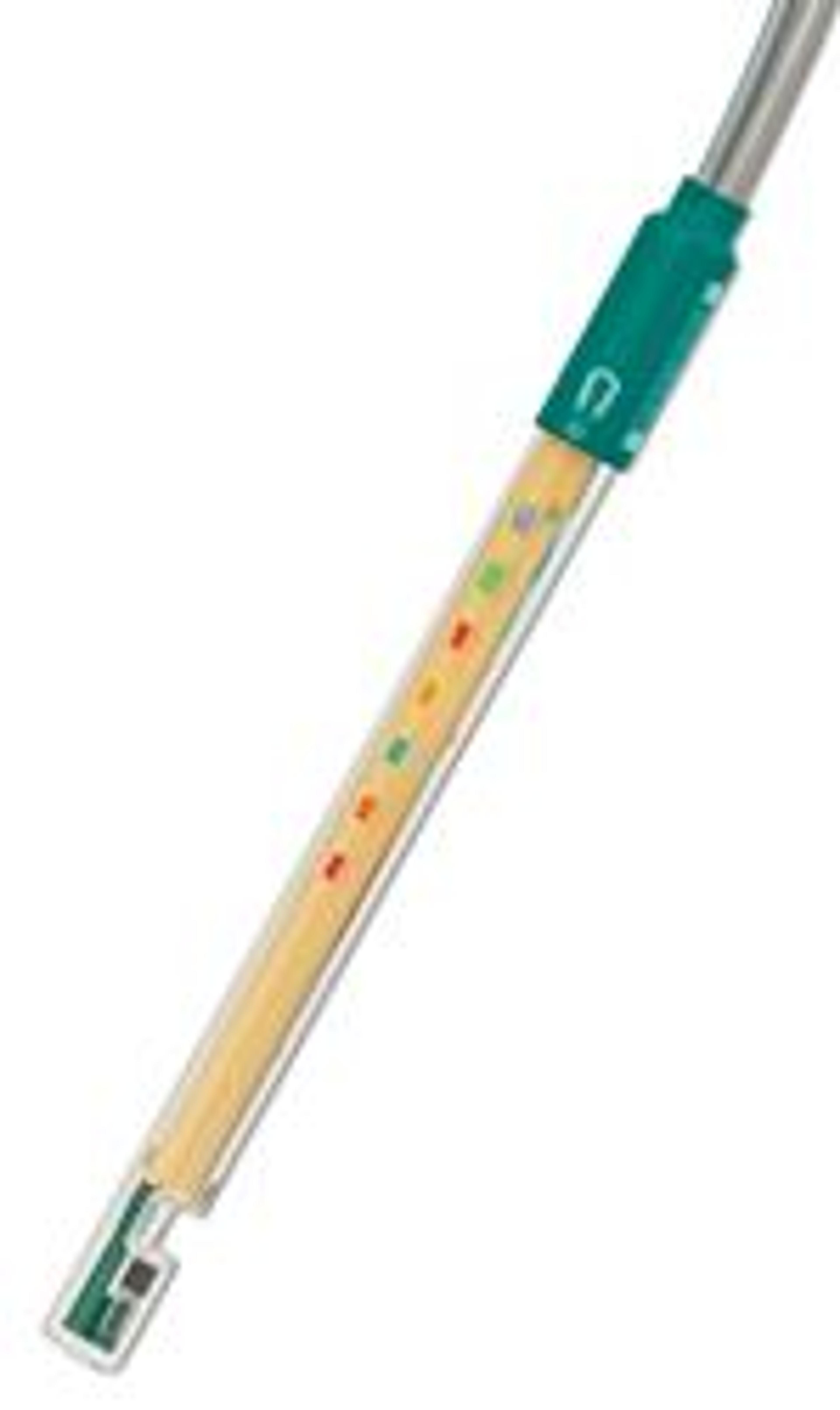Avoid titration mistakes through best practice sensor handling – on-demand webinar
Get expert advice on how to properly maintain sensors in order to achieve accurate titrations and minimize false results
18 Dec 2019

Have you ever wondered how the quality of your sensor can influence your titration results?
In a webinar now available on demand, Dr. Sabrina Gschwind, sensors product manager at Metrohm, details proper sensor maintenance and how you can check and monitor the performance of your titration unit. In addition, she offers tips and tricks to increase the quality of your titration results and thus avoid wasting time on tedious root cause analysis and instrument downtime due to sensor failure.
Read on for highlights from the Q&A discussion at the end of the live webinar or register to watch the full webinar on demand:
WATCH ON DEMANDQ: Does the use of electrodes in potentiometry completely eliminate the use of color indicators? We came across a method that required the use of a color indicator.
SG: In many pharmacopoeia methods, the use of color indicator is still given because they are using optical photometric titration. But as soon as you start using potentiometric titration, you do not need to add a color indicator because you're really measuring the potential itself, the properties of the solution, which does not need a color indicator.
Q: Is there a way to see from my titration results that a sensor is too old?
SG: From just one titration result, you cannot say that your sensor is too old. Normally, it takes a while to see that the electrode is getting older. So, you must compare your titration results over time. If you're always performing similar titrations, this is quite easy. You are just monitoring the duration of your titration and your potential jumps. These are the two most important factors to see whether your titration results and your electrodes are still fine. If you have different tests that you're running, I highly recommend doing tests like I showed you according to AB-048, for example.
Q: What can I do to prevent the thick hydrating layer on the glass pH electrodes?
SG: Unfortunately, this is the effect that you will always have. The hydrating layer on the glass will always increase over time. That's just a matter of fact because the glass membrane is stressed by temperature, by ions present and so on. However, you can decrease this effect. For example, by using the right storage solution you can make sure that the lifetime of your electrode is increased, but you cannot prevent the hydrating layer from growing.
Q: How often is it necessary to clean a ceramic pin on your electrode and how do I clean it properly?
SG: This depends on your sample. You can have a very sticky sample and you see that your ceramic pin diaphragm starts to change color or you may also see that the signal starts to get noisier. Then, of course, you must clean it, but the right cleaning solution depends on the sample. You must find something that dissolves the material that is blocking the diaphragm.
Q: How do I decide how many and which buffers I should use for my pH calibration?
SG: The number of buffers depends a little bit on how accurate you want to have your results and also the range to span, which depends on the pH that you expect for your sample. You'll always have to have the sample pH within the calibration range. So, if you have samples with different pH values, of course, your calibration range becomes bigger. Therefore, you would have to have more buffers to use. And yes, if you have a sample of pH 3, you don't need to use buffer 10, for example, to calibrate your electrode.
Q: Joint titration solutions are heated to approximately 40 degrees Celsius. Does the temperature of the solution have an influence on the end result?
SG: No, it won't have an influence on your results. It might have an effect on the measured potential. However, you're not taking the absolute value of your potential for evaluating the titration curve. So, it's just that relative behavior of the titration curve, i.e., only the potential jump itself, that you are interested in, the position of this potential jump is not affected by temperature.
Q: Will the sample temperature affect the signal stability of the combined platinum electrode for redox titration?
SG: This question goes a little bit in the same direction as the previous one. Signal stability itself should not really be affected by temperature. I don't know what the temperature is in this case, but normally the temperature itself is not problematic for the accuracy of your results.
Q: When performing a photometric titration, how can I determine which wavelength is the correct one for my analysis?
SG: I can only recommend here to check for the largest potential difference of the sample before titrating and the sample after titrating. So, you can either check the UV/Vis spectra of the two samples to see where you have the biggest difference between the two curves. Or, you could use the Metrohm Optrode to measure the potential for every wavelength in the untitrated and then the titrated sample and select the wavelengths where the difference between untitrated and titrated potential is largest.
Q: If we're currently using a platinum electrode for an aqueous solution that is not clear, do you suggest a sleeve diaphragm instead?
SG: A sleeve diaphragms would be the better choice. Metrohm does not currently offer such a ring electrode with ground joint diaphragm. However, if the pH value of the sample remains stable over the course of the titration, I would go anyway for a maintenance-free Titrode because the handling of this electrode is so easy. You don't have to fill up electrolytes and you don't have to clean the diaphragm. So, if possible, I would change to a Titrode.
Q: How do you measure the zero potential? Is it with three molar potassium chloride?
SG: The zero potential is coming from the pH calibration itself and is a property of your pH electrode. You cannot measure the zero potential directly, you have to establish a calibration curve. Then you will get the potential offset at pH 7 or the pH value at exactly zero millivolts, which relates to the zero potential.
Q: Will you observe a higher level of accuracy measuring the pH of a solution using a combination electrode system or a separate pH reference electrode system?
SG: To be honest, I cannot answer this for sure. But I would say there is no difference whether you use a combined one or a separate one. Why should there be a difference? I mean, in the end, all the parts are completely the same. Just using a bit less space.
Q: Someone is using the generator electrode without the diaphragm, in conjunction with an indicator electrode for colorimetric water concentration determination. However, sometimes they have been getting invalid values. Is this related to the maintenance of the electrode and, if so, what could they do to avoid it?
SG: I think it's very difficult to answer this question without having any data to look at. Because invalid results can be related to almost anything. So, it may not be the electrode, it could be the hardware itself, it could be evaluation from the software, and so on. Here I think it would be best to have a closer look at the data and see what exactly is causing these problems.
Q: If someone is using alkaline buffers and notices the pH never seems to stop deriving, is that because of carbonates from the air? What’s your opinion on this?
SG: I think it could be two different things. If the pH never seems to get stable, it could be either due to the buffer not being buffered enough by having too few ions, or that the wrong sensor is being used for this type of pH. The sensor could be too old and very slow. The sensor may be drifting for a very long time, which appears to the user as the sensor not getting stable. In addition, if they have a high amount of carbon dioxide entering the solution, it can happen that the pH of the buffer itself is constantly changing and therefore the sensor is not reading a stable potential.
Q: What would be the effect on a titration if a sensor was stored in the incorrect solution?
SG: Quite often, you see that the initial potential that you're measuring is completely different. Sensors start to have trouble to read proper signals. They are jumping and therefore you can get the wrong results compared to the previous ones, you have higher RSDs and so on. But if, for example, the silver Titrode is stored in the KCl, the silver ring would start to react with the chloride in the solution and form a layer on the ring, which you can just clean and then the electrode is fine to go again. So, if it's just short-term, the effect for the electrode is not too big.
Q: How can we know if we have an interference in chloride titrations?
SG: It's a little bit difficult to know what exactly is meant by referring to in terms of interference, I assume interference of other chloride ions. Of course, they can come from anywhere. A possibility is to add a standard solution where you know the exact concentration, and see whether these match or not. However, I think here it would be necessary to have some more information to answer this question properly.
SelectScience runs 3-4 webinars a month across various scientific topics, discover more of our upcoming webinars>>

